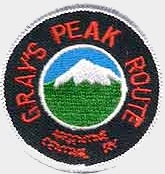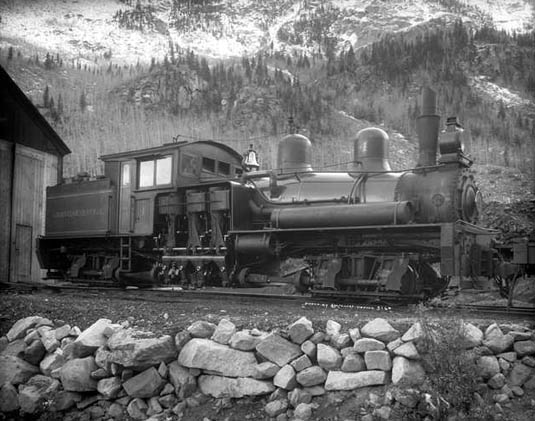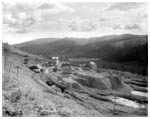Argentine Central Railway
 Started in 1905 and completed in 1906, the Argentine Central Railway proved to be a boon for the mining town of Waldorf and the surrounding mining district. The railway was also a popular attraction for visitors who wanted to spend a day in the mountains. Started in 1905 and completed in 1906, the Argentine Central Railway proved to be a boon for the mining town of Waldorf and the surrounding mining district. The railway was also a popular attraction for visitors who wanted to spend a day in the mountains.
Reverend Edward J. Wilcox, a one-time Methodist minister and successful mining entrepreneur, purchased sixty-five mining properties in the Waldorf and surrounding areas. In 1902 Wilcox incorporated the properties into the Waldorf Mining and Milling Company, about nine miles east of Silver Plume. Wilcox quickly realized that to tap the full potential of the mineral wealth in the Argentine district better transportation was needed. Wilcox, with money earned by selling mining property near Idaho Springs, decided to build a railway.

Argentine Central Locomotive Number 4, built by Lima in 1907, a two truck Shay perfect for the line's steep grades and tight curves poses in front of the Silver Plume engine house at the railway's lower terminus - circa 1890 Louis Charles McClure - Denver Public Library call number MCC-3160.
The Argentine Central Railway held a ceremonial ground breaking on 1 Aug 1905, Colorado Day, in Silver Plume. It appears Wilcox jumped the gun a little as he did not officially incorporate the railway until 10 Aug 1905. Work on grading the narrow gauge right-of-way progressed and by September the Colorado & Southern line and the Argentine Central tracks were joined.
| | 
A view of Waldorf Mine and mill at Waldorf, Clear Creek County, Colorado ( 11,666 feet elevation ). Waldorf mill was one of the major shippers on the narrow gauge line. Argentine Central Railway's narrow gauge tracks, sidings, switches, and water tower may be seen - Circa 1906-13 Louis Charles McClure - Denver Public Library call number MCC-693.
|
The railway's first of seven geared locomotives, Shay No. 1, arrived in August from the Lima Locomotive and Engine Company. Track laying progressed and by 31 Jan 1906, the track had reached Waldorf, about nine miles from Silver Plume. Work continued but winter slowed the advance of track toward the summit of Mt. McClellan, the eventual terminus. On 1 Aug 1906, exactly one year to the day the road was started, a ceremonial gold spike was driven at the summit of Mt. McClellan, the end of track.
In addition to hauling ore and mining supplies the railway now officially commenced excursion operations. Liberally claiming the road was 14,007 feet in elevation, the Argentine Central was labeled the highest railway on the North American continent. The elevation, along with boasting of the scenery, attracted numerous excursionists to the road.
The railway was busy and Wilcox ordered more locomotives and equipment. To finance the expansion Wilcox went into debt. He never recovered, and eventually sold the railway at a loss to a group of Denver businessmen in 1909. The Argentine Central went through a number of other owners and name changes (Georgetown and Grays Peak Railway Company) but none proved to be a financial success. In October 1918, the final successor filed to permanently discontinue operations and remove the track. By 1920 all track had been removed and the sixteen mile roadbed started to return to nature.
Today little is left of this remarkable railway except the roadbed. Jeepers and hikers can still follow the route to the summit of Mt. McClellan and explore the Waldorf and Argentine district but the trains are long gone.
Back
|
|